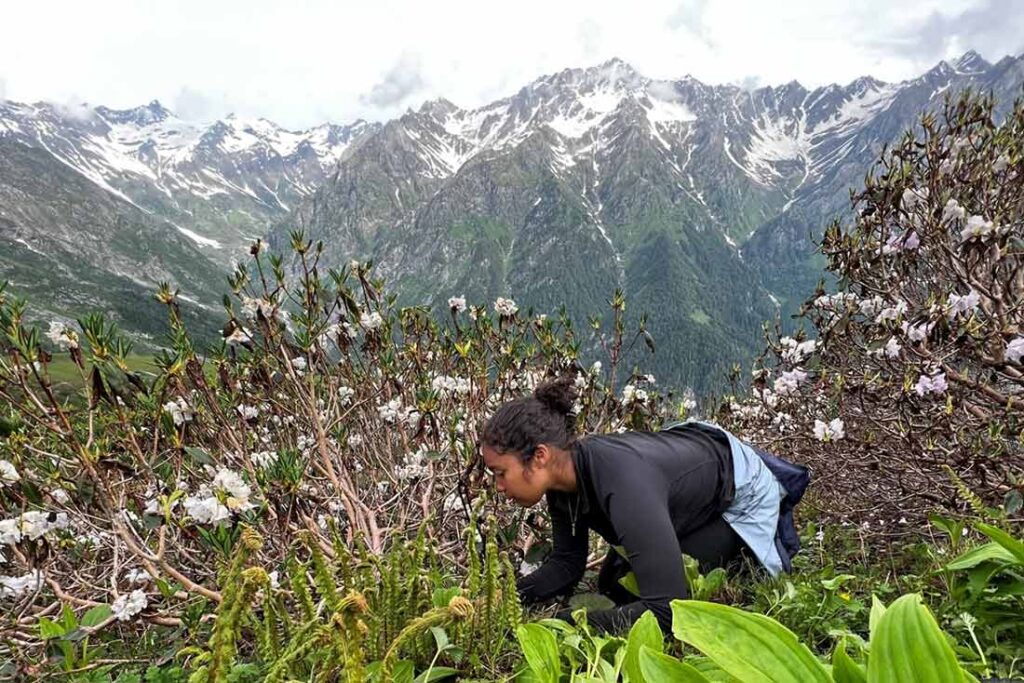As a proud Conservation Nation grant recipient, I am thrilled to share details about my recent fieldwork experience in the breathtaking Himalayan landscapes of Nain Gahar and Manali, Himachal Pradesh, India. My research focused on how climate change impacts the nests and nest-building behavior of warblers in the Phylloscopus genus, particularly Hume’s warblers (Phylloscopus humei). With the Himalayas experiencing excessive warming and unpredictable weather patterns, studying these warblers will provide valuable insights into the impacts of our changing climate on delicate ecosystems.
While conducting my research, I faced the exciting and sometimes frustrating challenge of locating the warblers’ small domed ground nests. The nest-searching process required patience, observation, and a deep understanding of bird nesting behavior. For hours, I quietly watched the birds as they foraged, then followed them back to their nests. Once I discovered a new nest, I collected information, such as geographical data (e.g., elevation, coordinates, surrounding habitat), nest status (e.g., eggs, chicks), and fledgling morphometric (i.e., size and shape) measurements. To help me understand nest thermoregulatory properties, I examined different construction techniques, analyzed nesting materials, and measured nest heat retention capabilities.
So far, my research has led to intriguing findings and surprising discoveries! I learned that each Phylloscopus species has a unique nest design. For instance, Blyth’s leaf warbler (Phyllocopus reguloides) nests are 97% moss, while Hume’s warbler nests are made mainly of grasses. I also discovered that there is remarkable nest diversity within a single species, as is the case with Hume’s warblers. Their nests range widely in size, from 8 to 25 grams in weight, raising intriguing questions about environmental influences on nest construction.
While exciting, my fieldwork was not without its challenges. The experience entailed living in a tent at altitudes over 3,100 meters in a region with frigid temperatures, unpredictable weather events like hailstorms and snow, and dangerous animals like bears and monkeys. However, the pros of collecting new data and being surrounded by snow-capped mountains far outweighed the cons.
My experience in the Himalayas has reinforced my commitment to preserving the region’s remarkable ecosystems, as the visible impacts of climate change were a powerful reminder of the urgent need for conservation. I am deeply grateful to Conservation Nation for supporting my research and allowing me to be a part of this incredible journey.











